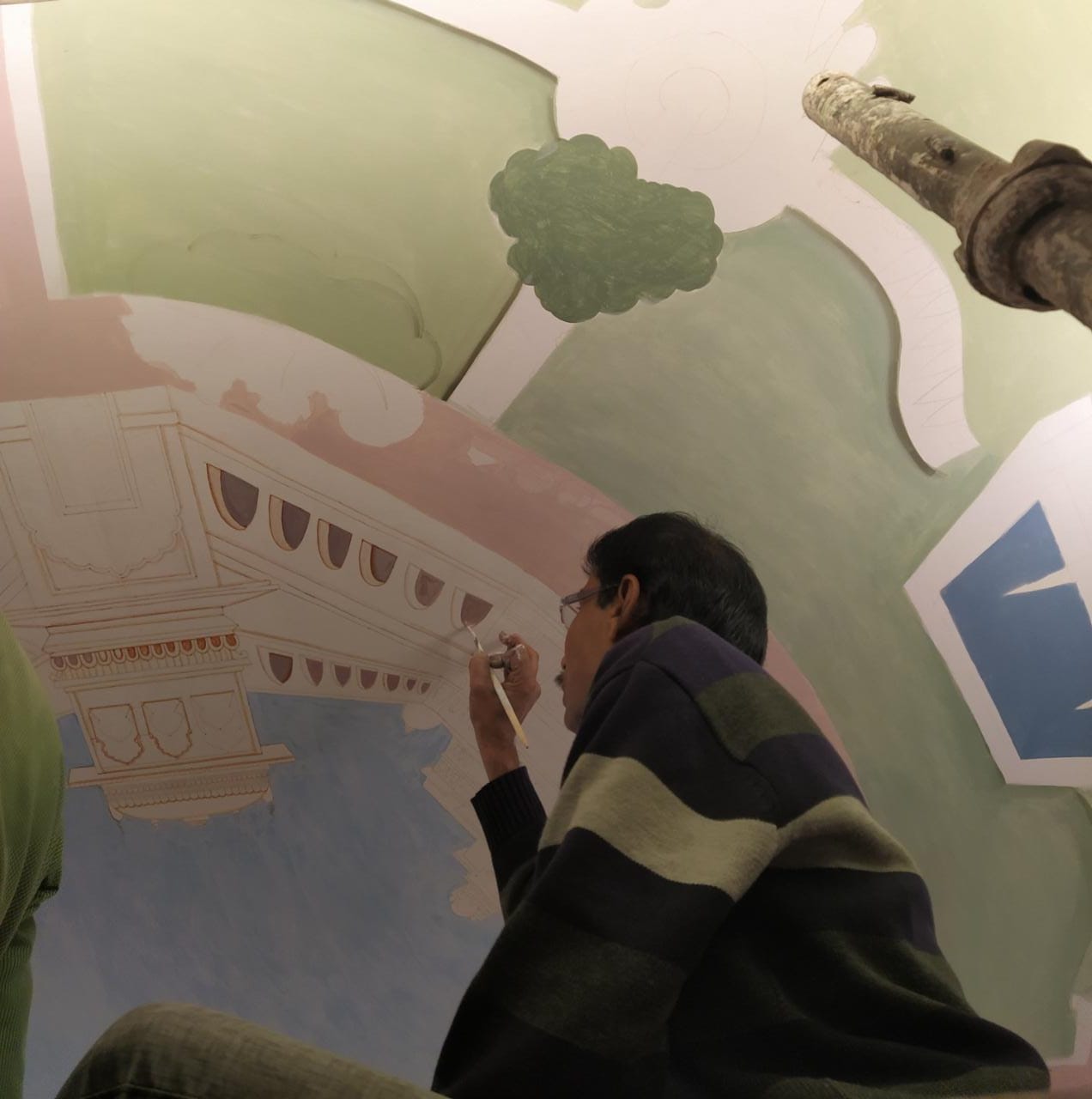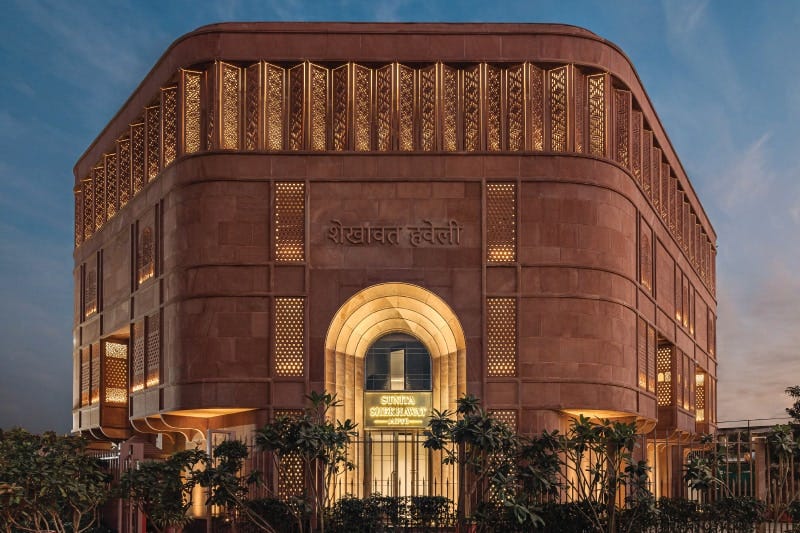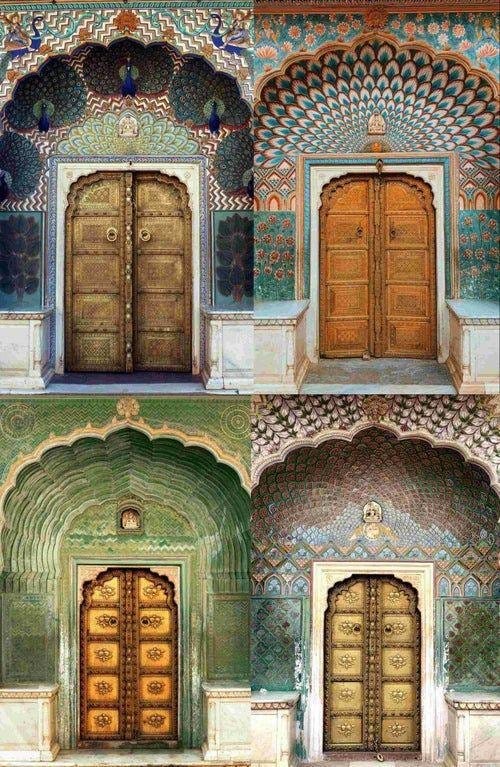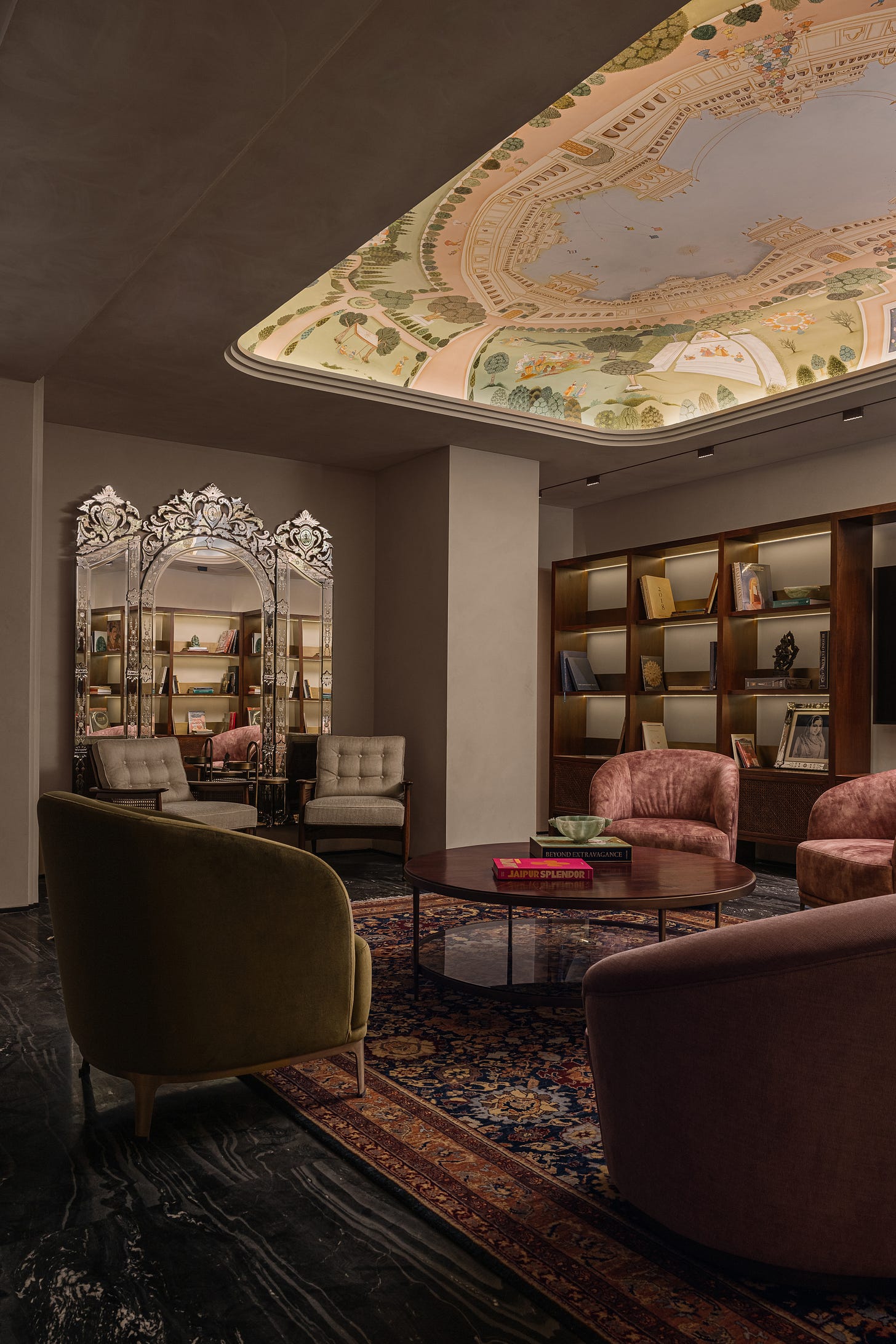Looking Up in Jaipur: A Ceiling Mural Rooted in Miniature Tradition
It’s not every day that you get to design a ceiling. And certainly not every day that it’s hand-painted by traditional miniature artists. When we were asked to design five ceiling artworks for the stunning Sunita Shekhawat Jewellery store in Jaipur, it felt nothing short of momentous. In a way, I felt like Michelangelo — though I wasn’t the one standing on the scaffolding with my head craned upwards for months. (Painting different surfaces demands a unique kind of endurance—and often, you can recognize an artist’s favored surface just by observing their posture. Well, I can.)
Fittingly named ‘Shekhawat Haveli’ —the building itself is iconic. The space that also houses a museum has won multiple design awards. Sunita Shekhawat, the designer and jeweller behind the brand, is Jaipur-born (and or married into) and is deeply rooted in its cultural and artisanal heritage. This mural, at the entrance to her flagship store, needed to do justice not only to her vision but to the city itself. It had to be a story of Jaipur — its seasons, its celebrations, its rhythm of life.
Our starting point was the Pritam Niwas Chowk in the Jaipur City Palace — the courtyard with four ceremonial gates, each aligned to a cardinal direction and symbolising a season. If you have been to Jaipur, you have definitely been here. We needed this level of recall for this mural. Taking inspiration from this, we developed the artwork as four quadrants, each one dedicated to a season — spring, summer, monsoon, and winter.
At the heart of the mural is the palace itself, rendered in an aerial view that recalls the intricate detail and layered perspectives (tweaked a tad bit by us) of miniature painting. Each gate leads into a lush scene — anchored in architecture and animated with festivities.
With the support of Ghanshyam Nimbark, a National Award-winning miniature painting artisan, we reproduced key architectural elements—the chhatris (domed pavilions), jharokhas (overhanging balconies), and arched gateways—not merely as decoration but as structural anchors. The entire mural is staged like a day in the palace (spanning the entire year), where people, rituals, and nature interact across space and time.
Each quadrant begins with a gate motif and unfolds into a seasonal festival scene — from dancing figures celebrating Holi in spring, to languid retreats among cypress trees in winter, and grand utsavs beneath lush, flowering canopies.
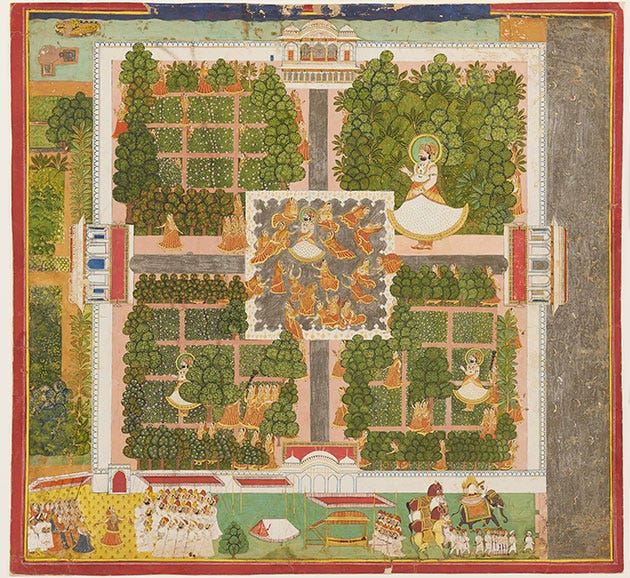
Take the gardens, for instance: we echoed the formal symmetry of royal gardens seen in miniature paintings like Maharaja Man Singh and the Ladies of the Zenana in the Garden Palace at Sur Sagar. Scenes of palace life come alive — women cooling off in lotus ponds, musicians playing under trees, and boats gliding across water, inspired by works like Maharaja Bakhat Singh Revels in a Pleasure Boat Ride, Nagaur. And of course, we couldn’t miss the ubiquitous Jaipur tradition of kite flying — a sight that fills the city’s skies during the breezy months, now captured on our painted ceiling.
We spent weeks researching miniature styles across schools — Kishangarh, Mewar, Marwar — before putting pen to paper. The goal was not replication but reinterpretation: to create a harmonious, cohesive landscape that unfolded across seasons. We took liberties too — merging stylistic elements from different schools and layering timelines — confident that the execution by our team of Jaipur-based artists would tie everything together.
At the end of it all, we got what we aimed for. The ceiling isn’t just decorative — it’s immersive. It invites the viewer to look, linger, and return. On one visit, you notice the kite string. On another, the hand gesture of a dancer in the corner. Like the city itself, the mural rewards those who pause and take it all in.
Look up to see what royal life was.
And then, come back for more!




